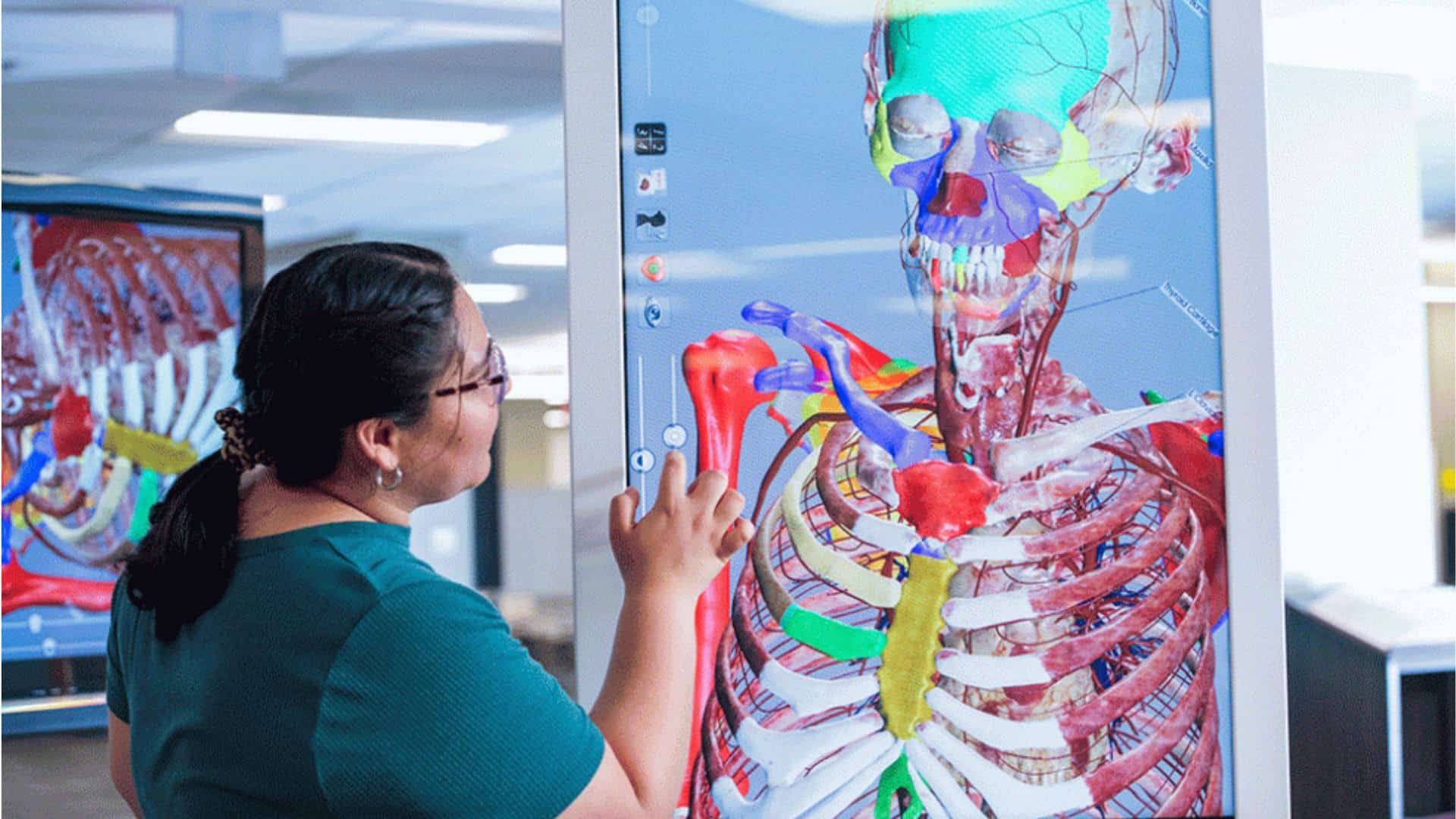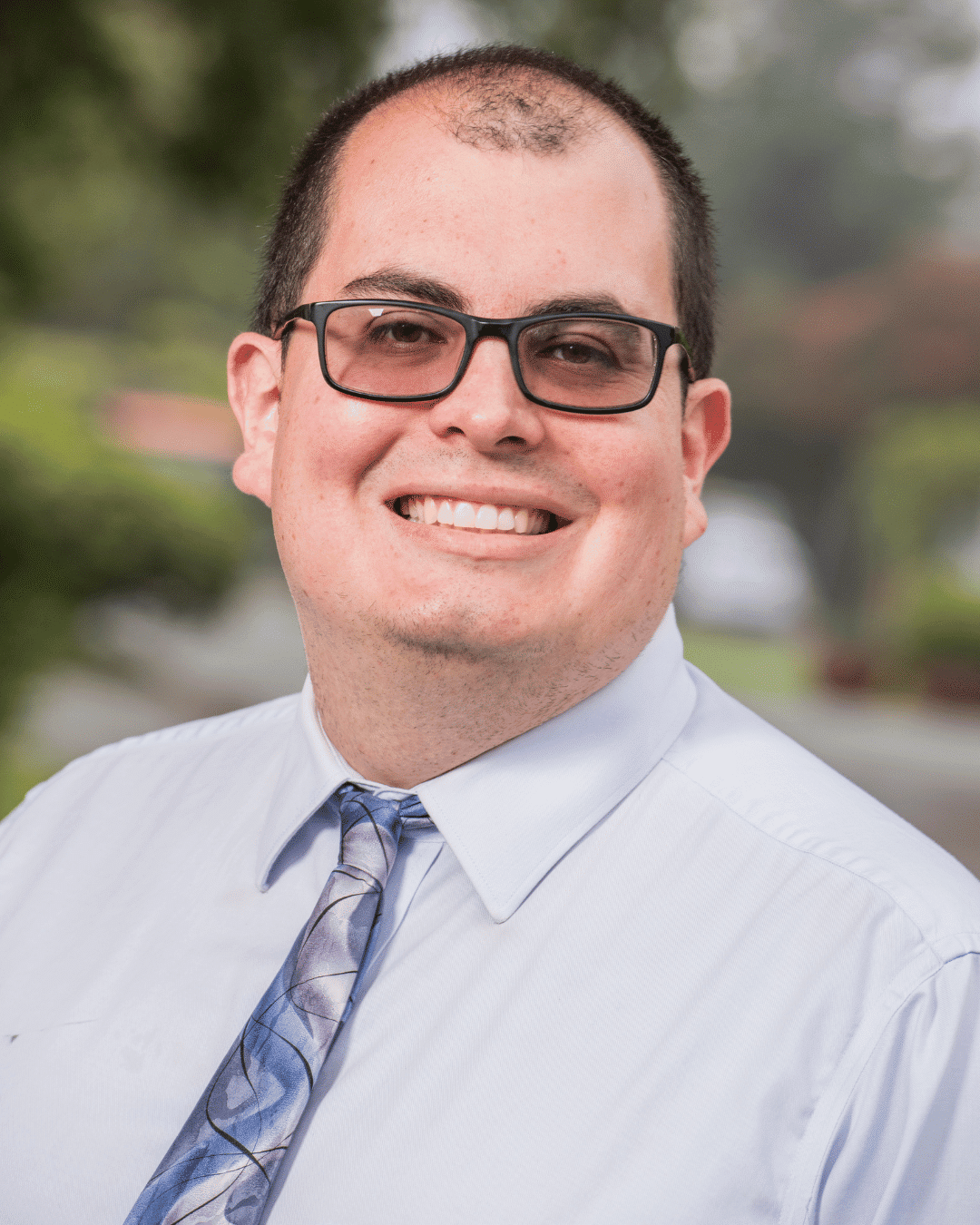You might picture stacks of dust-covered books. But nowadays knowledge comes in all kinds of forms — and libraries are adapting to meet that challenge.

Jacky Salas Haro uses the anatomage table at the Cal Poly Humboldt Library’s Hall of Simulation during an internship course.
This article was produced exclusively for News Decoder’s global news service. It is through articles like this that News Decoder strives to provide context to complex global events and issues and teach global awareness through the lens of journalism. Learn how you can incorporate our resources and services into your classroom or educational program.
When Janet Calderon first visited the X̱wi7x̱wa Library in Vancouver, Canada it was different than anything she had ever seen before. It is the only Indigenous branch of an academic library in all of Canada. Pronounced “whei-wha,” its name is from the language of the Squamish people who have inhabited the region for thousands of years.
Calderon is a humanities librarian at Reed College near Portland in the U.S. state of Oregon and earned a master’s degree in Library & Information Studies from the University of British Columbia in Canada, which oversees the X̱wi7x̱wa Library. Experiencing this library was transformational in many ways for Calderon.
“Everything about how this knowledge is put together reflects a unique perspective,” Calderon said.
The X̱wi7x̱wa Library is one of many examples from around the world of the transformation of libraries from collections of books to comprehensive learning centers and hubs for diverse communities.
British Columbia, where this library is located, has an Indigenous population of nearly 300,000 people, which is approximately 5.9% of the province’s overall population. The library embeds Indigenous knowledge in everything, from the use of Indigenous terms in its classification system to a building design that represents a pit house of the Interior Salish people.
Hubs of enlightenment
Libraries have a rich history of serving as gathering spaces. Early libraries, such as the Library of Alexandria in Egypt and Bayt al-Hikmah (House of Wisdom) in Iraq, were hubs for knowledge and enlightenment that attracted scholars from near and far.
Libraries today continue to serve as gathering places for communities by fostering the exchange of information and ideas. Many libraries are modifying their spaces so that they can be meeting places, information centers or culture centers, or serve other purposes for members of a given community. Depending on where you live, how a library chooses to configure its spaces and for what purposes can vary widely.
Libraries across Kenya, for example, promote environmental sustainability through efforts such as adopting green building standards and by housing atriums within the library, as well as installing green roofs on top of the building itself.
In Shanghai, China, a city known for strong ties to business and the global economy, public libraries serve different demographics such as the elderly, homeless and students by providing them space and access to information and resources that help them meet specific needs, such as applying for jobs.
In Santa Clara, Cuba, the central patio and surrounding spaces of the Marti Provincial Library were renovated. As a result, the Library is now able to host motivational and cultural activities, as well as events that meet specific needs such as workshops on job skills.
The public library in Umeå, Sweden is housed within the Väven Cultural Center, which enables library visitors to check out books, tour the Women’s History Museum, watch a film in a theater and more, all under the same roof.
Reassessing how space is used
At my library at the California State Polytechnic University, Humboldt in California, visitors to the Hall of Simulation can use a flight simulator, digitally dissect an animal or cadaver and simulate wildfires, an annual problem in the state. The library’s spaces also host student-centered workshops, research symposiums and events, including an annual celebration of campus and community authors.
Transformations at the Cal Poly Humboldt Library have been aided through the development of SpaceUse, software that enables the library to track and analyze how its spaces are utilized by patrons. For many library workers, changing and adapting existing library spaces allows them to reimagine how a library can serve its community.
Michell Hackwelder, the interpretation unit head at the Education & Outreach Department for the Abu Dhabi Department of Culture and Tourism in the United Arab Emirates, helped renovate libraries used by international peacekeeping forces in Egypt to create community hubs for the many people who came there for recreational activities and to find a quiet space.
Hackwelder has spent over 40 years in the library field and has helped guide many library transformations across the Middle East and North Africa. This includes creating maker spaces and programming areas for afterschool and computer and sciences programs at elementary schools in Saudi Arabia and upgrading the early childhood and technology areas at the Abu Dhabi Children’s Library.
Hackwelder said that people in the community get excited about the space transformations and more people from different demographics end up using the library.
Some people miss the stacks.
It should be noted that changes to library spaces are not without some controversy. Libraries have limited space to work with, so decisions about what to change can be difficult to navigate. Younger people who grow up in a digital world might not connect to books the way older generations did. However, the removal of books and shelves to make room for new spaces can anger the many book lovers who rely on libraries.
As communities and societies change, libraries will be expected to do the same.
Samantha Mendiola is an architect at HGA that focuses on library design. Mendiola has worked on several library redesigns across the United States, from a high school library in Massachusetts to college libraries in Minnesota.
Mendiola said that many of the libraries she has worked with are focusing on renovations with existing spaces to better serve changing community demographics and technology needs while also fostering community engagement and accommodating diverse learning styles.
“Libraries have always been adaptable and they’re evolving even faster now, post-pandemic, to meet new expectations,” Mendiola said.
Questions to consider:
1. In what ways are libraries adapting to meet the needs of the people they serve?
2, What is the primary role of a library?
3. If you were to create a new library in your town, what would you want it to have?

Garrett Purchio is the College of Arts, Humanities and Social Sciences Librarian at Cal Poly Humboldt in Arcata, California. He earned a Bachelor of Arts degree in Journalism from Humboldt State University (now California State Polytechnic University, Humboldt) and a Master of Library and Information Science from San Jose State University.
